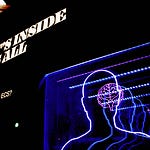The drug development process is an interconnection between businesses and biological sciences. Pharmaceutical companies are involved in the development and marketing of new drugs.
Drug development is a long process that involves small processes like the creation of a bioactive drug molecule, testing of such drugs for their desired or side effects, and marketing these drugs to customers. Drug design and discovery form a part of this complex drug development process.
The drug design process is sometimes also termed as rational drug design and it aims to detect novel candidate drug molecules based on their biological properties and targets. Drug discovery is a way to develop new candidate drugs by the application of various drug design techniques.
Drug discovery is a patient-oriented process where the new drug is more potent than the already existing drug within that category. Traditional approaches to this rely on laboratory-based experimentation done by an expert scientist or a chemist with a piece of strong domain knowledge.
It is a long step-wise activity involving various stages namely: (i) identification of biological targets, (ii) validation of biological targets, (iii) lead structure search, (iv) lead structure optimization, (v) pre-clinical studies, (vi) clinical trials, and (vii) formulations for clinical studies.
The field of computer science and statistics attempt to automate this complex drug development process to reduce development time and cost. The adoption of emerging techniques and tools of Artificial Intelligence (AI) during the drug discovery process usually referred to as Computer-Aided Drug Discovery (CADD). The CADD utilizes Computers, Statistics, Information Sciences, AI tools like ML, and DL most finely to discover the candidate drugs.
Many ML and DL based tools and software have been found effective for drug discovery activities like drug target prediction, compound and bioactivity prediction, target prediction, molecular property prediction, protein-ligand interaction, identification of essential protein, drug-target interaction, drug-protein interaction, compound property interaction, and virtual screening.
Over the last decade, drug discovery has been greatly influenced by the fields of Chemoinformatics and Bioinformatics. Both these fields run hand in hand concerning drug discovery. The term Informatics itself justifies the use of computers in these fields. Cheminformatics is a multidisciplinary science that combines Chemistry, Mathematics, Biochemistry, Statistics, and Informatics.
Similar to Chemoinformatics, Bioinformatics deals with biological data to extract essential information. Bioinformatics is also a multidisciplinary field that combines Biology, Mathematics, Statistics, and Informatics. The major difference between these two fields is Chemoinformatics deals with small molecules, like drug molecules, or lead compounds, whereas, Bioinformatics deals with large molecules like proteins or genes.
Both these streams have laid an essential foundation in the drug discovery phenomenon and are collectively referred to as Bio-Chem-Informatics.
One major applicative area of Chemoinformatics in drug discovery. Cheminformatics approaches extract the meaningful data, and this technique is used for the target identification stage of drug discovery to identify the drug target, which can either be a gene or protein.
Many chemoinformatics tools along with the chemical data available in data repositories speed up the drug discovery process.












Share this post